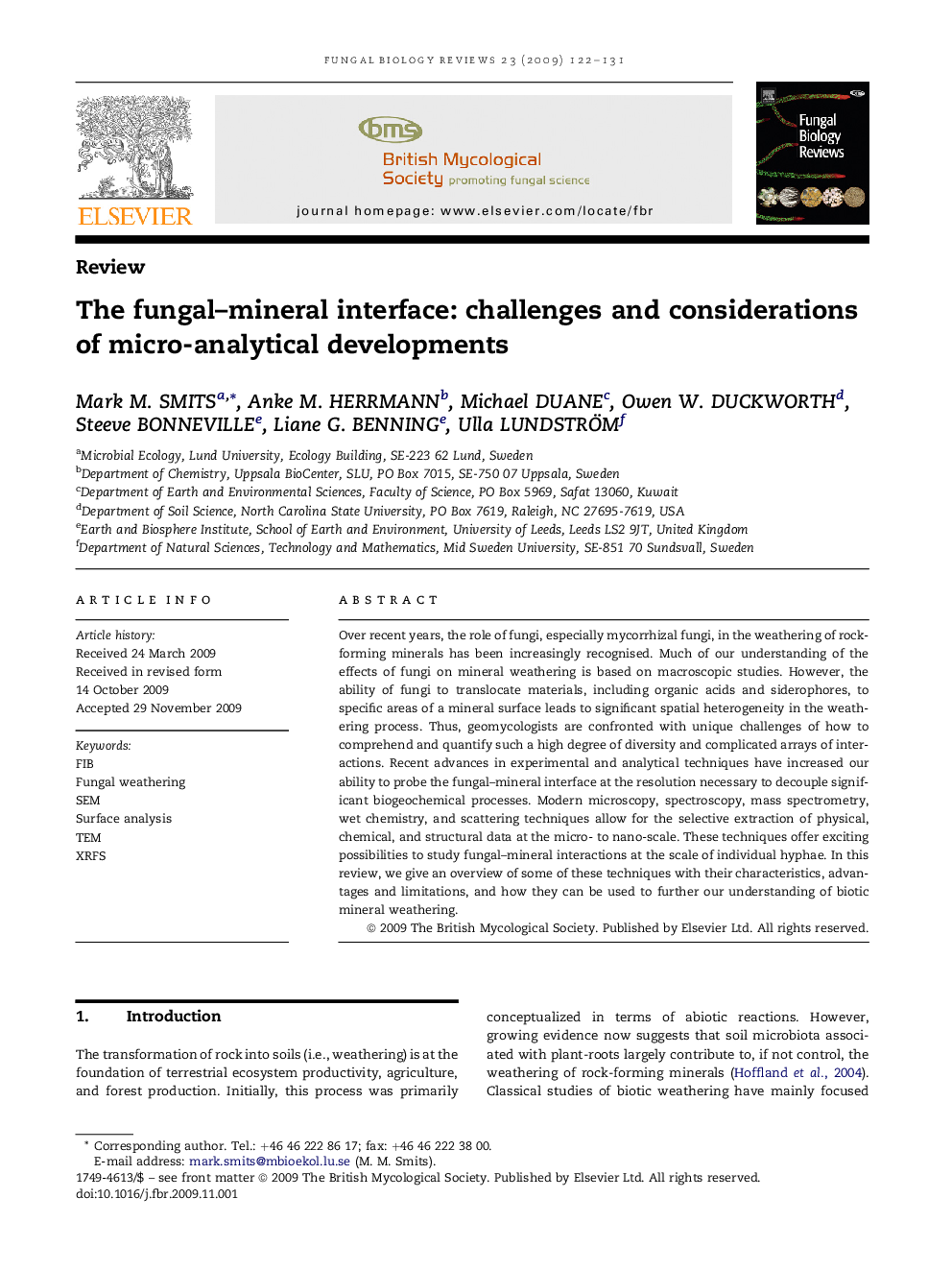| Article ID | Journal | Published Year | Pages | File Type |
|---|---|---|---|---|
| 2180626 | Fungal Biology Reviews | 2009 | 10 Pages |
Over recent years, the role of fungi, especially mycorrhizal fungi, in the weathering of rock-forming minerals has been increasingly recognised. Much of our understanding of the effects of fungi on mineral weathering is based on macroscopic studies. However, the ability of fungi to translocate materials, including organic acids and siderophores, to specific areas of a mineral surface leads to significant spatial heterogeneity in the weathering process. Thus, geomycologists are confronted with unique challenges of how to comprehend and quantify such a high degree of diversity and complicated arrays of interactions. Recent advances in experimental and analytical techniques have increased our ability to probe the fungal–mineral interface at the resolution necessary to decouple significant biogeochemical processes. Modern microscopy, spectroscopy, mass spectrometry, wet chemistry, and scattering techniques allow for the selective extraction of physical, chemical, and structural data at the micro- to nano-scale. These techniques offer exciting possibilities to study fungal–mineral interactions at the scale of individual hyphae. In this review, we give an overview of some of these techniques with their characteristics, advantages and limitations, and how they can be used to further our understanding of biotic mineral weathering.
